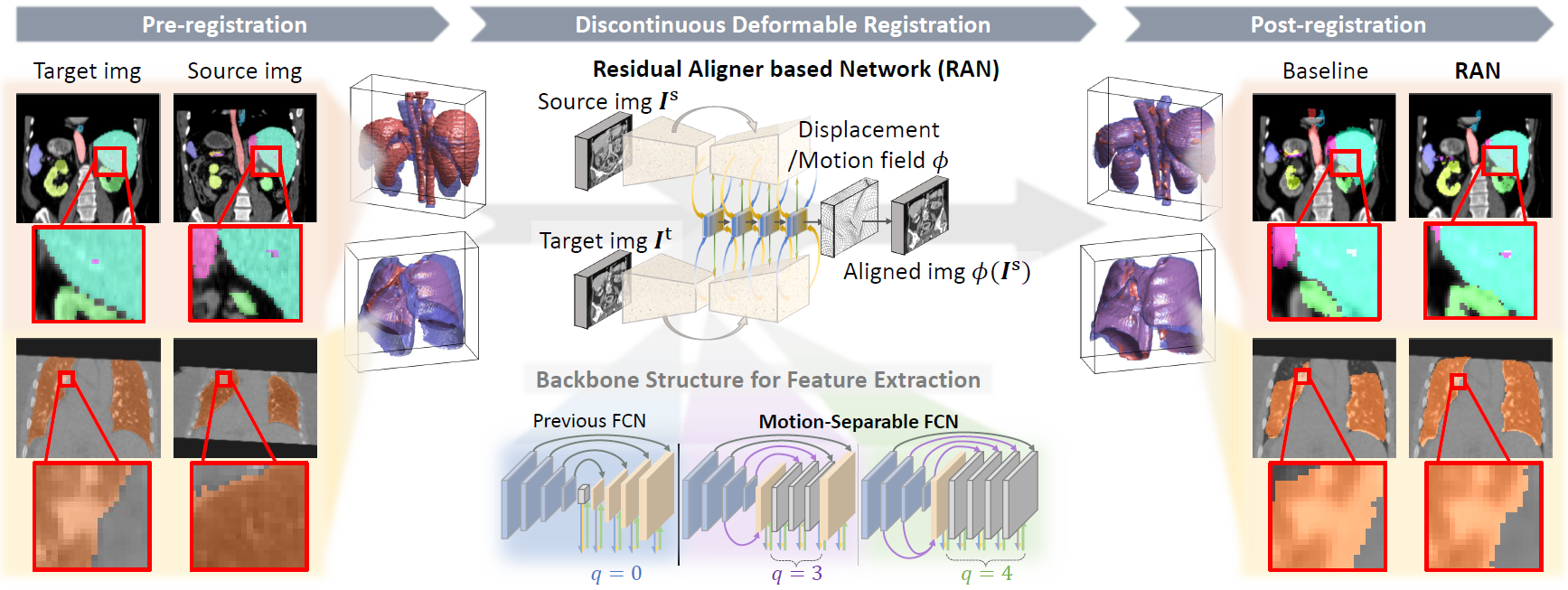Residual Aligner Network
Image registration is important for medical imaging, the estimation of the spatial transformation between different images. Many previous studies have used learning-based methods for coarse-to-fine registration to efficiently perform 3D image registration. The coarse-to-fine approach, however, is limited when dealing with the different motions of nearby objects. Here we propose a novel Motion-Aware (MA) structure that captures the different motions in a region. The MA structure incorporates a novel Residual Aligner (RA) module which predicts the multi-head displacement field used to disentangle the different motions of multiple neighbouring objects. Compared with other deep learning methods, the network based on the MA structure and RA module achieve one of the most accurate unsupervised inter-subject registration on the 9 organs of assorted sizes in abdominal CT scans, with the highest-ranked registration of the veins (Dice Similarity Coefficient / Average surface distance: 62\%/4.9mm for the vena cava and 34\%/7.9mm for the portal and splenic vein), with a half-sized structure and more efficient computation. Applied to the segmentation of lungs in chest CT scans, the new network achieves results which were indistinguishable from the best-ranked networks (94\%/3.0mm). Additionally, the theorem on predicted motion pattern and the design of MA structure are validated by further analysis.
PDF Abstract

 Learn2Reg
Learn2Reg